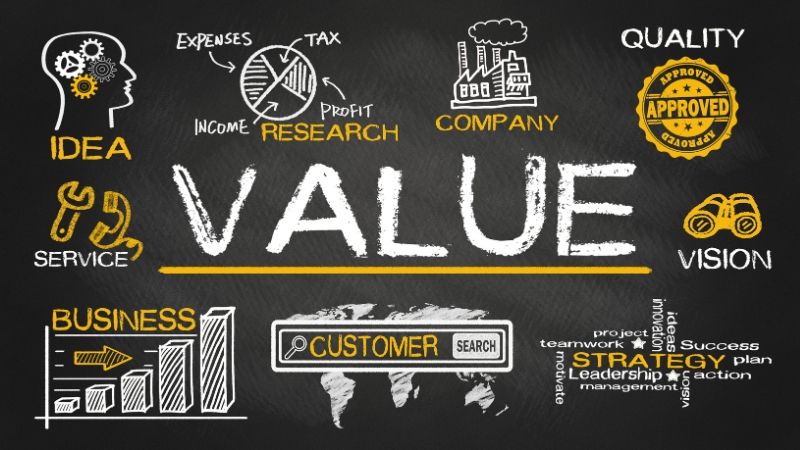Categories
How to Value a Business

Understanding the worth of your business is a complicated calculation that may not have been considered in some time.
When a situation arises where the financial value of your business is needed, it is often necessary to calculate the value from scratch. But how do you go about making a business valuation in the UK? And why might it be necessary?
Here at Clifton Private Finance, we have years of experience in helping UK businesses obtain finance solutions based on their business performance, projections, and valuations - read on to learn how to value a business.
Why Value a Business?
The most obvious reason to value a business is for sale, but it is not the only time when a business valuation is important - a business that is looking for financial investment will also need a full professional valuation to entice potential investors.
Outside of this, it can also be good to undertake an honest and accurate valuation of the business to provide yourself and your shareholders with a current overview of the business’s monetary value.
Doing so will provide a comprehensive understanding of the company, enabling a proper assessment that will impact future direction by giving you essential data on the areas in which your company is succeeding - and those where it is struggling.
Regularly valuing the business is a key part of confident company ownership, promoting both transparency and conviction in the enterprise.

How To Value a Business
The 7 most common ways to value a business are:
- Physical Asset-Based Valuation
- Full Asset Valuation
- Entry Cost Valuation
- Discounted Cash Flow
- Comparable Analysis
- Price to Earnings (P/E) Ratio
- Industry Standards
Note that there is no one single way to value a business. Given the vast differences between companies, in terms of structure, sector, forecasting, and many other values, it is simply impossible to have a “one size fits all” solution to business valuation.
Physical assets, profit forecasts, innovation, comparison with similar businesses, brand loyalty, and many other factors may all affect your valuation. Knowing which of these are important contributors for your specific business will play a significant part in selecting an appropriate method.
See the latest market news below.
2025 Business Finance Market Update
In the past year, business finance saw significant growth, perhaps surprisingly driven by challenger lenders and alternative finance providers. Many of these lenders reached their largest milestones in 2024, primarily through supporting SMEs that may have struggled to access traditional funding elsewhere.
Businesses are continuing to face significant economic challenges carried over from 2023. High inflation, supply chain disruptions, and geopolitical tensions persist, which have complicated financial planning and made it difficult for businesses to acquire funding.
But the Bank of England has cut its base interest rate for the first time in 4 years, signalling a cautious shift toward economic stabilisation after years of inflationary pressure. Further cuts are anticipated, and businesses can expect a flurry of spending in the coming months.
As well as this, a number of banks and large firms seem to be racing to the finish line to implement generative AI and new technology that could streamline business and boost profits. Enhancing tech in banking looks like a win-win for lenders and borrowers, offering more personalised financial solutions and a quicker, more secure process.
In the tech industry, investments in AI are reshaping business. Tech giants like Alphabet, Amazon, and Microsoft have seen their market values surge, driven by the rush to implement AI.
Method 1 - Physical Asset-Based Valuation
For businesses that are rich in physical assets and hold less stock in intangible assets, a basic net asset valuation offers a simple and effective way of making a value calculation.
A physical asset-based valuation is the sum of your tangible assets, minus your liabilities. Physical, tangible assets may include:
Simply add up the value of these items, deduct your liabilities and what remains forms the root of your company valuation.
If you have an up-to-date balance sheet, then these figures should be very similar to that. It is also important to consider inflation and depreciation.
A physical asset-based valuation has the advantage that it is a very quick way to produce a business valuation, though it is really only suitable for businesses that consider their physical assets to be the substantial core of the business.
One example of a company that may find this type of valuation useful is a bricks and mortar shop business.
Method 2 - Full Asset Valuation
Like the previous method, a full asset valuation calculates the worth of the business by creating a total sum of assets which is then offset by the business liabilities.
Complications may arise in valuing those intangible assets. Determining the monetary worth of your business brand and reputation, or your intellectual property, can be difficult and often specialist help is vital to reach a realistic assessment.
A further problem for companies relying on an asset valuation is that often the figures produced by this method are lower than many other options for valuing a business and thus, its true market value.
This difference occurs due to the lack of consideration in an asset valuation for goodwill - the fact that people may be willing to pay more for a company taking into account its branding, market reach, and other intangible assets, than a Net Book Value asset valuation may suggest.
Method 3 - Entry Cost Valuation
An entry cost valuation is one where the market value of the business is determined by calculating how much it would cost to rebuild the entire company from scratch, with the assumption that the business doesn’t exist.
In other words, it’s a valuation based on the idea that if you disappeared right now, how much would it take to make it all again.
Evaluating an entry cost can be quite time consuming as every detail of the company has to be taken into account. This isn’t as simple as just adding up the assets and seeing how much it would be to buy them all again; intangible assets such as client databases, brand reputation and much more are all factored, alongside recruitment and training expenses, product R&D, and other considerations that represent the growth of the company to this point.
The main downside to an entry cost valuation, however, is that it doesn’t make any attempt to value the company based on any future growth or the impact of competition. Essentially, it acts as a one-time snapshot of the company state at the time of assessment.
Method 4 - Discounted Cash Flow
When seeking investment, one significant method of valuing a business is the Discounted Cash Flow (DCF) method.
It is favoured by many investors as it can help understand whether their investment today will make profit for an exit strategy in a number of years.
DCF isn’t as simple as merely adding the cash flows of the next few years together. Other factors affect the calculation including:
- The time value of money - This concept dictates that the real world value of £1 today will be less in a year, and less again the following year, and so on. This is because the investment potential of having the money today is a factor in its long-term worth.
- Unforeseen expenses - Future cash flow estimates are exactly that - estimates - thus a safety net must be provided to account for unforeseen expenses and unexpected bills that may impact the figure.
- External factors - Another significant risk encompasses unknown worldwide events. Again, these can only be estimated, but their impact is somewhat folded in to the calculation.
To provide a more risk-aware estimate, the cash flow calculation is discounted by a rate determined by these factors to provide a final DCF value.
When investment is being sought, the cost of the initial investment is deducted from the DCF to provide a final value, known as Net Present Value (NPV). If NPV is positive, then the business is seen as growing efficiently in the coming years and represents a worthwhile investment. When negative, the business is considered weaker and investment at the proposed value may be unsustainable.
DCF can be used by potential investors, therefore, to negotiate a more appropriate company value that produces a positive NPV.
Method 5 - Comparable Analysis
One effective method to determine the value of your business is to compare it to other similar companies for whom valuations are known.
While this doesn’t provide an accurate valuation of your company that takes into account all the unique intellectual property and other aspects that make your business unique, it offers a well-established benchmark and for many, is the first step when determining how to value a business.
When making valuations in this way, it is essential to understand the different values placed upon publicly traded and private companies, such that making a direct comparison with a publicly traded business if yours is privately held would require a considerable discount to ensure accuracy.
This difference would typically be between 30% to 50%.
As a comparable analysis represents an estimated value rather than a direct calculation, consultation with financial industry experts is recommended.
Method 6 - Price to Earnings (P/E) Ratio
The Price to Earnings (P/E) ratio is a specific comparable analysis valuation method tied to share prices. As such, the P/E ratio method is used by businesses that are publicly traded and doesn’t apply for smaller, privately-owned enterprises.
It is calculated as a ratio between the price of a share (P) when compared to the relative company earnings for that share (E).
- When P/E is low (representing high earnings for each share) then the company is likely undervalued.
- When P/E is high (suggesting that the stock price is high in comparison to the return) then the company may be overvalued.
Investors can compare the P/E ratio of the business against other similar businesses in the industry, providing an overview of the company in relation to its competitors and make appropriate adjustments in their company valuations utilising this data.
Privately held companies may look to other ratio-based metrics to perform similar analysis on their enterprises, such as the revenue/cost ratio.
Method 7 - Industry Standards
Some industries where business purchases occur regularly have known best-practices and standards for evaluating the worth of a business that are typically applied. These may include analysing data such as turnover, customer levels, and number of outlets.
As with other comparative analysis style methods, following industry best-practices is an estimate and you may want to consider it as a starting point rather than a complete valuation.
Another downside to following industry standards is the reliability of the data, especially in sectors where market trends can alter rapidly.
Calculating the Incalculable - How to Value a Business’s Goodwill
With all these financial valuations, one aspect remains somewhat elusive - that of your brand’s intangible value - its goodwill. This can be the USP that propels your business valuation far beyond the methods of calculation and estimation outlined in this article.
While much can be done to try to place a figure on the essence of your brand, only through negotiation can the final value of your business truly become known - remember, the true value of anything is the amount someone is willing to pay for it.
A combination of elusive factors will play their part in the final business valuation - your brand loyalty, the future growth of a specific IP, the location of your business outlets and future development in those areas, the adoption of new technologies in your sector, the results of your ongoing R&D… all of these and more should, and must, feature in your final market value assessment.
Read next: Business Loans for Buying a Business












